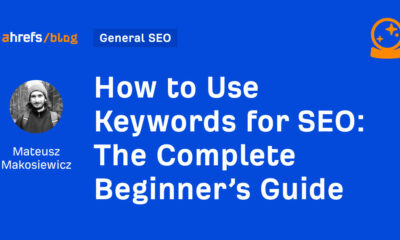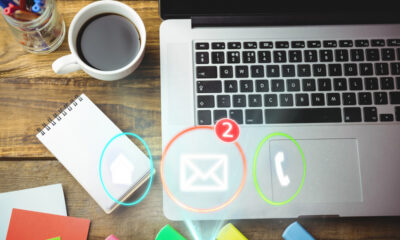SOCIAL
Indian alcohol brands’ digital marketing efforts, ET BrandEquity

Alcohol advertising may be banned in India, but marketers are still finding ways to leverage digital marketing to reach relevant audiences.
The Cable Television Networks (Amendment) Rules prohibited television channels from broadcasting any advertisement which directly or indirectly promotes the sale or consumption of liquor, wine, cigarettes and tobacco products. These Rules are a direct result of The Cable Television Network Act of 1995. The Rules permitted that alcohol brands could use surrogate means of advertising by using brand extensions (such as music CDs or packaged drinking water) in their advertisements.
However, in 2022, the government came out with a ban on surrogate advertising. A new clause was introduced under the Central Consumer Protection Authority (CCPA) guidelines titled ‘Guidelines for Prevention of Misleading Advertisements and Endorsements for Misleading Advertisements, 2022’. This clause stated that –
No surrogate advertisement or indirect advertisement shall be made for goods or services whose advertising is otherwise prohibited or restricted by law, by circumventing such prohibition or restriction and portraying it to be an advertisement for other goods or services, the advertising of which is not prohibited or restricted by law.
However, alcohol brands are still free to leverage digital marketing in a bid to reach the right audiences. Digital marketing allows marketers to take a more targeted approach when it comes to designing and creating communications for their audiences. Brands also leverage on-ground associations with events in order to create familiarity and recall.
One of the ways that alcohol brands leverage digital marketing is by creating content on social media as well as collaborating with content creators. The brands we spoke to for the purpose of this article admitted that they shied away from using performance marketing to reach their audiences. Though there are no hard and fast rules prohibiting an alcohol brand from using digital marketing to reach their desired audiences, most brands want to err on the side of caution.
“While the world has moved to performance marketing, the alcohol industry is still in the late 2000s as far as digital marketing is concerned. The field we’re playing in is a fenced one – that’s the best way to describe it. For most companies – they begin with creating brand awareness, then it moves on to brand engagement and eventually sampling. Our business is still stuck in the brand awareness stage,” says Rohan Rehani, co-founder, Moonshine Meadery.
Moonshine Meadery is a brand that focuses on making alcoholic beverages (mead) from honey and it uses a combination of email marketing, offline events, social media content based on said offline events to appeal to its digital audience. Rehani mentions that the email marketing messages have good open rates and that the brand uses it to drive engagement and create awareness – both about the brand and the events that they host.
Grégoire Verdin – Head Of Marketing – Sula Vineyards says that the brand has never had to resort to using surrogate advertising. What works for the wine brand is collaborating with content creators on social media to create interest around the offline experience that the brand offers at their winery. The vineyards generally have restaurants and resorts where the patrons can stay, experience wine tastings, etc.
Moonshine Meadery’s work with influencers involves activities where tasting and sampling happens on an offline level and Sula Vineyards follows a similar playbook when it comes to their offline events.
Verdin explains that when it comes to wine, awareness levels are relatively low – because of which it is important to encourage sampling. He admits that it takes a rather experimentative type of person to try different wines and this is the audience they typically try to appeal to when they create content for different social media platforms.
An interesting insight that he shares is that the acceptance for wine and drinking alcohol has increased after the popularity of OTT content grew in India. Indian viewers now have access to content from around the world – in which a person drinking a glass of wine and relaxing with their partner after a long day at work has gained acceptance to a large extent.
For most alcohol brands – this is an important part of the puzzle. Connecting its offline presence with a digital one in such a way that it creates brand awareness and encourages trials. Sula offers curated events that sell a lifestyle to its participants. Moonshine Meadery organises ticketed events such as mead tastings and pub crawls. The brand also made an appearance on popular entrepreneurship show Shark Tank – after which Rehani claimed that brand awareness and trials went up significantly.
Beyond experiential events that are directly linked to alcohol sampling and consumption, an alcohol brand may also choose to associate with offline events. Anheuser-Busch InBev or AB InBev is one such brand that associates with a host of offline events.
Ankit Kataria, director – marketing at Anheuser-Busch InBev estimates that when it comes to Indian audiences – 30% consume alcohol and the rest 70% are what he calls an ‘abstaining’ audience – who don’t consume alcohol for whatever personal reasons. The beverage industry typically measures market share by the phrase ‘share of throat’.
Kataria estimates that at a pan-India level, beer has a 12-15% share of throat and in metro cities, beer has around 20% of share of throat. He adds that when it comes to alcohol brands, digital’s contribution in terms of a media vehicle is about one and a half times more compared to other FMCG brands. For beer, this number would be 2-3x more. So digital becomes the key media for one on one effective communication.
Some of the brands in AB-In Bev’s portfolio include Budweiser, Corona, Hoegaarden etc. The brand uses a combination of content on digital platforms as well as on ground activations to appeal to audiences. Kataria tells us that the brand uses digital marketing to address the top of the funnel metrics in terms of driving awareness. During events, the brand addresses the bottom of the funnel, which is driving trials.
It takes around 6-8 trials for a person to get used to one brand and to become loyal to it. Events, sponsorships and on-ground activations help people try the brand many times. It also has the right environment for people to consume the product and build memory structures.
“For example, if a user is listening to his favourite artist in a high energy environment with his friends or loved ones and he has a glass of Budweiser in his hand. It creates a memory structure you create, he’ll remember for a long time to come. Even in our social content, we try to capture the same essence,” he says.
The 70% alcohol abstaining audience also likes to be a part of high energy occasions such as watching a football game, going to a music festival, etc. To cater to these audiences, AB-InBev has a portfolio of non-alcoholic products.
“The marketer’s first task is to get into the consumer’s consideration set and this means attending to last mile factors such as availability, offers etc. So the first step is to drive awareness and consideration and then to close the loop, make sure that in the last mile, your product is present,” he concludes.
SOCIAL
12 Proven Methods to Make Money Blogging in 2024

 This is a contributed article.
This is a contributed article.
The world of blogging continues to thrive in 2024, offering a compelling avenue for creative minds to share their knowledge, build an audience, and even turn their passion into profit. Whether you’re a seasoned blogger or just starting, there are numerous effective strategies to monetize your blog and achieve financial success. Here, we delve into 12 proven methods to make money blogging in 2024:
1. Embrace Niche Expertise:
Standing out in the vast blogosphere requires focus. Carving a niche allows you to cater to a specific audience with targeted content. This not only builds a loyal following but also positions you as an authority in your chosen field. Whether it’s gardening techniques, travel hacking tips, or the intricacies of cryptocurrency, delve deep into a subject you’re passionate and knowledgeable about. Targeted audiences are more receptive to monetization efforts, making them ideal for success.
2. Content is King (and Queen):
High-quality content remains the cornerstone of any successful blog. In 2024, readers crave informative, engaging, and well-written content that solves their problems, answers their questions, or entertains them. Invest time in crafting valuable blog posts, articles, or videos that resonate with your target audience.
- Focus on evergreen content: Create content that remains relevant for a long time, attracting consistent traffic and boosting your earning potential.
- Incorporate multimedia: Spice up your content with captivating images, infographics, or even videos to enhance reader engagement and improve SEO.
- Maintain consistency: Develop a regular publishing schedule to build anticipation and keep your audience coming back for more.
3. The Power of SEO:
Search Engine Optimization (SEO) ensures your blog ranks high in search engine results for relevant keywords. This increases organic traffic, the lifeblood of any monetization strategy.
- Keyword research: Use keyword research tools to identify terms your target audience searches for. Strategically incorporate these keywords into your content naturally.
- Technical SEO: Optimize your blog’s loading speed, mobile responsiveness, and overall technical aspects to improve search engine ranking.
- Backlink building: Encourage other websites to link back to your content, boosting your blog’s authority in the eyes of search engines.
4. Monetization Magic: Affiliate Marketing
Affiliate marketing allows you to earn commissions by promoting other companies’ products or services. When a reader clicks on your affiliate link and makes a purchase, you get a commission.
- Choose relevant affiliates: Promote products or services that align with your niche and resonate with your audience.
- Transparency is key: Disclose your affiliate relationships clearly to your readers and build trust.
- Integrate strategically: Don’t just bombard readers with links. Weave affiliate promotions naturally into your content, highlighting the value proposition.
5. Display Advertising: A Classic Approach
Display advertising involves placing banner ads, text ads, or other visual elements on your blog. When a reader clicks on an ad, you earn revenue.
- Choose reputable ad networks: Partner with established ad networks that offer competitive rates and relevant ads for your audience.
- Strategic ad placement: Place ads thoughtfully, avoiding an overwhelming experience for readers.
- Track your performance: Monitor ad clicks and conversions to measure the effectiveness of your ad placements and optimize for better results.
6. Offer Premium Content:
Providing exclusive, in-depth content behind a paywall can generate additional income. This could be premium blog posts, ebooks, online courses, or webinars.
- Deliver exceptional value: Ensure your premium content offers significant value that justifies the price tag.
- Multiple pricing options: Consider offering tiered subscription plans to cater to different audience needs and budgets.
- Promote effectively: Highlight the benefits of your premium content and encourage readers to subscribe.
7. Coaching and Consulting:
Leverage your expertise by offering coaching or consulting services related to your niche. Readers who find your content valuable may be interested in personalized guidance.
- Position yourself as an expert: Showcase your qualifications, experience, and client testimonials to build trust and establish your credibility.
- Offer free consultations: Provide a limited free consultation to potential clients, allowing them to experience your expertise firsthand.
- Develop clear packages: Outline different coaching or consulting packages with varying time commitments and pricing structures.
8. The Power of Community: Online Events and Webinars
Host online events or webinars related to your niche. These events offer valuable content while also providing an opportunity to promote other monetization avenues.
- Interactive and engaging: Structure your online events to be interactive with polls, Q&A sessions, or live chats. Click here to learn more about image marketing with Q&A sessions and live chats.
9. Embrace the Power of Email Marketing:
Building an email list allows you to foster stronger relationships with your audience and promote your content and offerings directly.
- Offer valuable incentives: Encourage readers to subscribe by offering exclusive content, discounts, or early access to new products.
- Segmentation is key: Segment your email list based on reader interests to send targeted campaigns that resonate more effectively.
- Regular communication: Maintain consistent communication with your subscribers through engaging newsletters or updates.
10. Sell Your Own Products:
Take your expertise to the next level by creating and selling your own products. This could be physical merchandise, digital downloads, or even printables related to your niche.
- Identify audience needs: Develop products that address the specific needs and desires of your target audience.
- High-quality offerings: Invest in creating high-quality products that offer exceptional value and user experience.
- Utilize multiple platforms: Sell your products through your blog, online marketplaces, or even social media platforms.
11. Sponsorships and Brand Collaborations:
Partner with brands or businesses relevant to your niche for sponsored content or collaborations. This can be a lucrative way to leverage your audience and generate income.
- Maintain editorial control: While working with sponsors, ensure you retain editorial control to maintain your blog’s authenticity and audience trust.
- Disclosures are essential: Clearly disclose sponsored content to readers, upholding transparency and ethical practices.
- Align with your niche: Partner with brands that complement your content and resonate with your audience.
12. Freelancing and Paid Writing Opportunities:
Your blog can serve as a springboard for freelance writing opportunities. Showcase your writing skills and expertise through your blog content, attracting potential clients.
- Target relevant publications: Identify online publications, websites, or magazines related to your niche and pitch your writing services.
- High-quality samples: Include high-quality blog posts from your site as writing samples when pitching to potential clients.
- Develop strong writing skills: Continuously hone your writing skills and stay updated on current trends in your niche to deliver exceptional work.
Conclusion:
Building a successful blog that generates income requires dedication, strategic planning, and high-quality content. In today’s digital age, there are numerous opportunities to make money online through blogging. By utilizing a combination of methods such as affiliate marketing, sponsored content, and selling digital products or services, you can leverage your blog’s potential and achieve financial success.
Remember, consistency in posting, engaging with your audience, and staying adaptable to trends are key to thriving in the ever-evolving blogosphere. Embrace new strategies, refine your approaches, and always keep your readers at the forefront of your content creation journey. With dedication and the right approach, your blog has the potential to become a valuable source of income and a platform for sharing your knowledge and passion with the world, making money online while doing what you love.
Image Credit: DepositPhotos
SOCIAL
Snapchat Explores New Messaging Retention Feature: A Game-Changer or Risky Move?

In a recent announcement, Snapchat revealed a groundbreaking update that challenges its traditional design ethos. The platform is experimenting with an option that allows users to defy the 24-hour auto-delete rule, a feature synonymous with Snapchat’s ephemeral messaging model.
The proposed change aims to introduce a “Never delete” option in messaging retention settings, aligning Snapchat more closely with conventional messaging apps. While this move may blur Snapchat’s distinctive selling point, Snap appears convinced of its necessity.
According to Snap, the decision stems from user feedback and a commitment to innovation based on user needs. The company aims to provide greater flexibility and control over conversations, catering to the preferences of its community.
Currently undergoing trials in select markets, the new feature empowers users to adjust retention settings on a conversation-by-conversation basis. Flexibility remains paramount, with participants able to modify settings within chats and receive in-chat notifications to ensure transparency.
Snapchat underscores that the default auto-delete feature will persist, reinforcing its design philosophy centered on ephemerality. However, with the app gaining traction as a primary messaging platform, the option offers users a means to preserve longer chat histories.
The update marks a pivotal moment for Snapchat, renowned for its disappearing message premise, especially popular among younger demographics. Retaining this focus has been pivotal to Snapchat’s identity, but the shift suggests a broader strategy aimed at diversifying its user base.
This strategy may appeal particularly to older demographics, potentially extending Snapchat’s relevance as users age. By emulating features of conventional messaging platforms, Snapchat seeks to enhance its appeal and broaden its reach.
Yet, the introduction of message retention poses questions about Snapchat’s uniqueness. While addressing user demands, the risk of diluting Snapchat’s distinctiveness looms large.
As Snapchat ventures into uncharted territory, the outcome of this experiment remains uncertain. Will message retention propel Snapchat to new heights, or will it compromise the platform’s uniqueness?
Only time will tell.
SOCIAL
Catering to specific audience boosts your business, says accountant turned coach

While it is tempting to try to appeal to a broad audience, the founder of alcohol-free coaching service Just the Tonic, Sandra Parker, believes the best thing you can do for your business is focus on your niche. Here’s how she did just that.
When running a business, reaching out to as many clients as possible can be tempting. But it also risks making your marketing “too generic,” warns Sandra Parker, the founder of Just The Tonic Coaching.
“From the very start of my business, I knew exactly who I could help and who I couldn’t,” Parker told My Biggest Lessons.
Parker struggled with alcohol dependence as a young professional. Today, her business targets high-achieving individuals who face challenges similar to those she had early in her career.
“I understand their frustrations, I understand their fears, and I understand their coping mechanisms and the stories they’re telling themselves,” Parker said. “Because of that, I’m able to market very effectively, to speak in a language that they understand, and am able to reach them.”Â
“I believe that it’s really important that you know exactly who your customer or your client is, and you target them, and you resist the temptation to make your marketing too generic to try and reach everyone,” she explained.
“If you speak specifically to your target clients, you will reach them, and I believe that’s the way that you’re going to be more successful.
Watch the video for more of Sandra Parker’s biggest lessons.
-

 SEO6 days ago
SEO6 days agoHow to Use Keywords for SEO: The Complete Beginner’s Guide
-

 MARKETING7 days ago
MARKETING7 days agoHow To Protect Your People and Brand
-

 MARKETING4 days ago
MARKETING4 days agoAdvertising on Hulu: Ad Formats, Examples & Tips
-

 MARKETING5 days ago
MARKETING5 days agoUpdates to data build service for better developer experiences
-

 MARKETING1 day ago
MARKETING1 day ago18 Events and Conferences for Black Entrepreneurs in 2024
-

 MARKETING6 days ago
MARKETING6 days agoThe Ultimate Guide to Email Marketing
-

 WORDPRESS4 days ago
WORDPRESS4 days agoBest WordPress Plugins of All Time: Updated List for 2024
-

 WORDPRESS5 days ago
WORDPRESS5 days agoShopify Could Be Undervalued Based On A Long-Term Horizon










